Tuina Massage and Yoga: The Perfect Wellness Pairing in Amsterdam
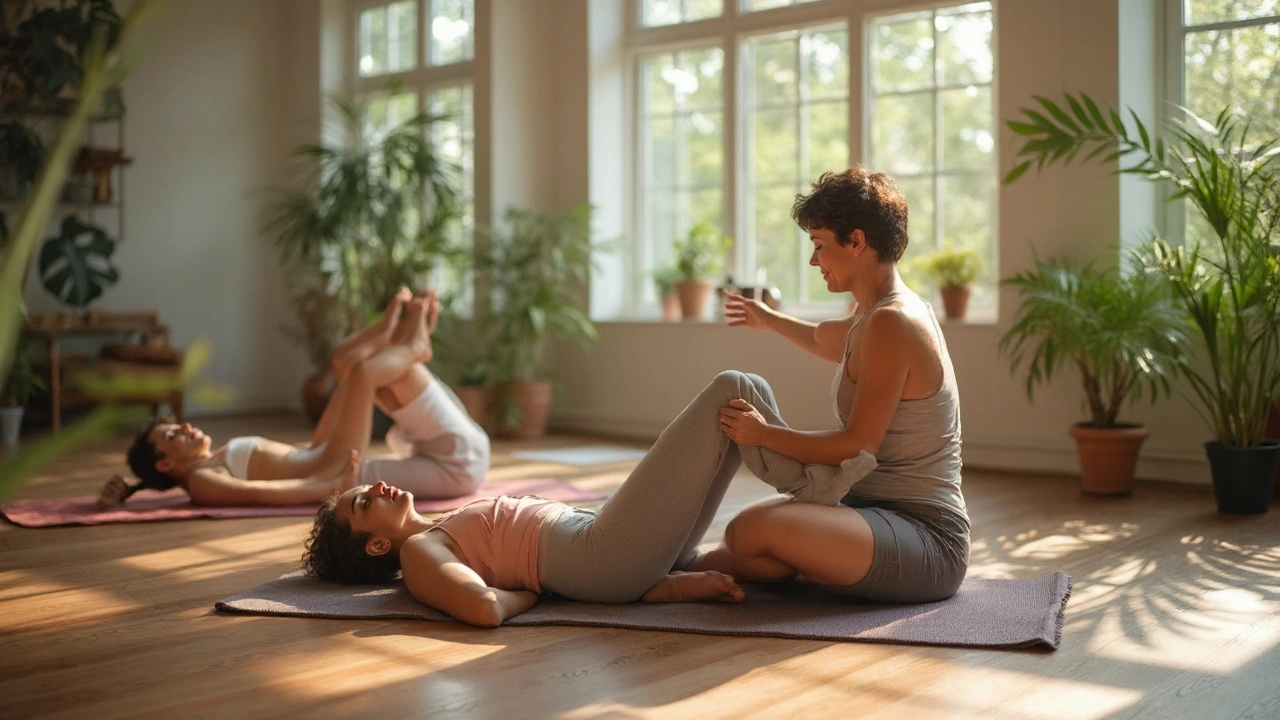
Downward dog is giving you life, but your shoulders won’t let you forget last Monday’s laptop marathon. Ever wondered if there’s a wellness hack out there that takes your yoga highs to another level? This is where Tuina massage slips in, quiet and powerful, like a secret handshake between ancient healing and today’s self-care. In the last five years, Tuina has become the talk of Amsterdam’s wellness world—yogis and desk-workers alike are swearing by it for muscle relief, energy boosts, and that floaty feeling you usually only get after a hot vinyasa class. Ready to see why so many yoga lovers are adding Tuina to their mat time?
How Tuina Massage Enhances Your Yoga Practice
Let’s start with what’s actually going on in a Tuina session. Built on traditional Chinese medicine principles, Tuina (pronounced "twee-nah") focuses on balancing your body’s flow of Qi—think energy, not magic. Practitioners use their hands, knuckles, and even elbows with all sorts of movements: kneading, rolling, pressing. It’s not the spa-style glide of a Swedish massage, but it’s not grueling deep-tissue either. Weirdly satisfying, that’s how most people describe their first experience—like someone found all the right buttons to reset your body.
So what happens when you pair Tuina with yoga? There’s a sweet spot here. Yoga stretches out your muscles and calms your mind, but it can also make tight spots painfully obvious. Ever hit child’s pose and suddenly your hips start whining? Tuina zooms in on these tension zones, using acupressure and rhythmic movements to melt away knots that yoga can’t always reach. You’ll find that after just one session, your muscles feel less clingy and more open, which means your next downward dog sinks deeper and feels better.
It’s not all about muscles, though. Tuina also nudges your nervous system into chill mode. Studies from the China Academy of Chinese Medical Sciences have shown Tuina can lower cortisol (your stress hormone), boost lymph flow, and improve sleep quality when done regularly. It helps your body recover faster between workouts, kicks DOMS (delayed onset muscle soreness) to the curb, and lifts mental fog—pretty much everything you want the morning after a tough yoga class or an iffy night of sleep.
Think of Tuina and yoga like peanut butter and jelly. Yoga helps you stretch, breathe, and get centered, while Tuina works backstage, smoothing out the creases in your fascia (that webby stuff around your muscles) and coaxing your nervous system into repair mode. The effect? You bounce back faster, stay nimble, and walk around with a grin that even Luna (my cat, who is impossible to impress) can’t ignore.
Want some pro tips? Try scheduling a Tuina session after an intense yoga class—but not right before, especially if you do hot yoga. Go into your massage with muscle warmth and openness, and you’ll get even more out of it. And don’t rush out the door after your massage; spend a few minutes sipping water, walking slowly, or just catching your breath. Your body will soak up the benefits instead of shocking itself back into "go-go-go" mode.
Amsterdam’s Tuina scene is blowing up for a reason: locals are onto the unique relief and invigoration it brings to an active city lifestyle. Whether you're a yoga newbie or a seasoned mat veteran, blending these two practices can turn your wellness routine from ‘good’ to ‘unreal.’

Tuina Massage in Amsterdam: Varieties, Booking, and Practical Tips
Let’s get granular—because not all Tuina is alike, and in Amsterdam, you’ve got choices. Some studios offer Tuina as a standalone hour-long session (sometimes 30-minute quick fixes exist too, for those lunch break rescue missions), while others blend it with other therapies like cupping or Chinese herbal treatments. In De Pijp and Jordaan, you’ll find minimalist wellness studios that give off serious zen vibes, but also more traditional Chinese healing centers run by families with decades of expertise. Want a major post-yoga revival? Look for Tuina sessions that focus on upper back, shoulders, and legs—key tension magnets for most yoga fans.
You also have options when it comes to the style of massage. Some therapists lean into deep, focused kneading on acupoints (think stubborn knots in your hamstrings after too many warrior twos). Others integrate lighter, rolling motions better for relaxation and lymphatic drainage—great if your yoga is paired with running or cycling and you’re battling swelling or fatigue. Several places even combine Tuina with Thai stretches, a game-changer for anyone who likes assisted stretching or can’t hit certain yoga poses alone.
Booking is mostly online these days. Platforms like Treatwell or the center’s own sites make it a breeze. Bonus tip: filter by location, therapist gender (if you have a preference), or specializations. Many Tuina therapists are also certified in acupuncture or reflexology, and that mix can mean a more tailored session—just check their bios. Double-check the language spoken; English and Dutch are universal in most places, but it’s handy.
How much will you pay? Most Tuina massages in Amsterdam cost €60–€90 for an hour, depending on the therapist's experience and studio setup. Package deals are common, especially if you plan to make this a regular part of your yoga recovery routine. If you snag a new client discount (often around 10–15%), treat yourself to a smoothie after and still stay under budget.
Now, about what actually happens in a session. You’ll often stay clothed, in loose gym clothes or supplied attire—no awkward spa gown swaps. The therapist will ask about your yoga habits and what’s bothering you most. Expect a focus on major stress points: neck, shoulders, lower back, maybe wrists (oh hello, chaturanga). If you want the therapist to hone in on a specific yoga injury, speak up! Amsterdam’s wellness scene is laid-back and super used to body-positive, open conversations. During the massage, you might feel gentle discomfort but never pain—you control the pressure. Some places end with a quick face or scalp massage, which feels heavenly after a sweaty class.
Let’s talk safety, too. If you have joint injuries, recent surgeries, or chronic health issues, mention it upfront. Licensed Tuina therapists know how to adapt and won’t work on inflamed or open wound areas. Pregnant? You’re mostly good to go, but make sure you tell the practitioner—they’ll avoid abdominal points and can tailor the session for comfort. Always ask about the products used (some places blend in aromatherapy oils) just in case of allergies.
Quick hack: Pair your Tuina massage with a restorative yoga class in your local studio the day after. The deep relaxation effect can stick around, and you’ll catch imbalances before they settle in. Think of it as spring cleaning for your fascia and joints.
Let’s make comparing Tuina to regular relaxation massage super clear. Here’s a side-by-side breakdown to help you decide which fits your needs.
| Feature | Tuina Massage | Standard Relaxation Massage |
|---|---|---|
| Technique | Acupressure, stretching, rolling, kneading (fully clothed) | Gentle stroking, kneading, oil-based (undressed to preference) |
| Main Benefit | Targeted muscle relief, energy flow, balances Qi | Lowers stress, relaxation, muscle relaxation |
| Best For | Yoga recovery, aches from exercise/posture, persistent tension | Stress relief, general body relaxation, sleep improvement |
| Availability in Amsterdam | Traditional Chinese clinics, some modern wellness studios | Spas, hotels, wellness studios—wider availability |
| Session Price (avg.) | €60–€90/hr | €50–€100/hr |
| Clothing | Loose, comfortable clothing (no oils) | Usually undressed or covered by a towel (oils used) |
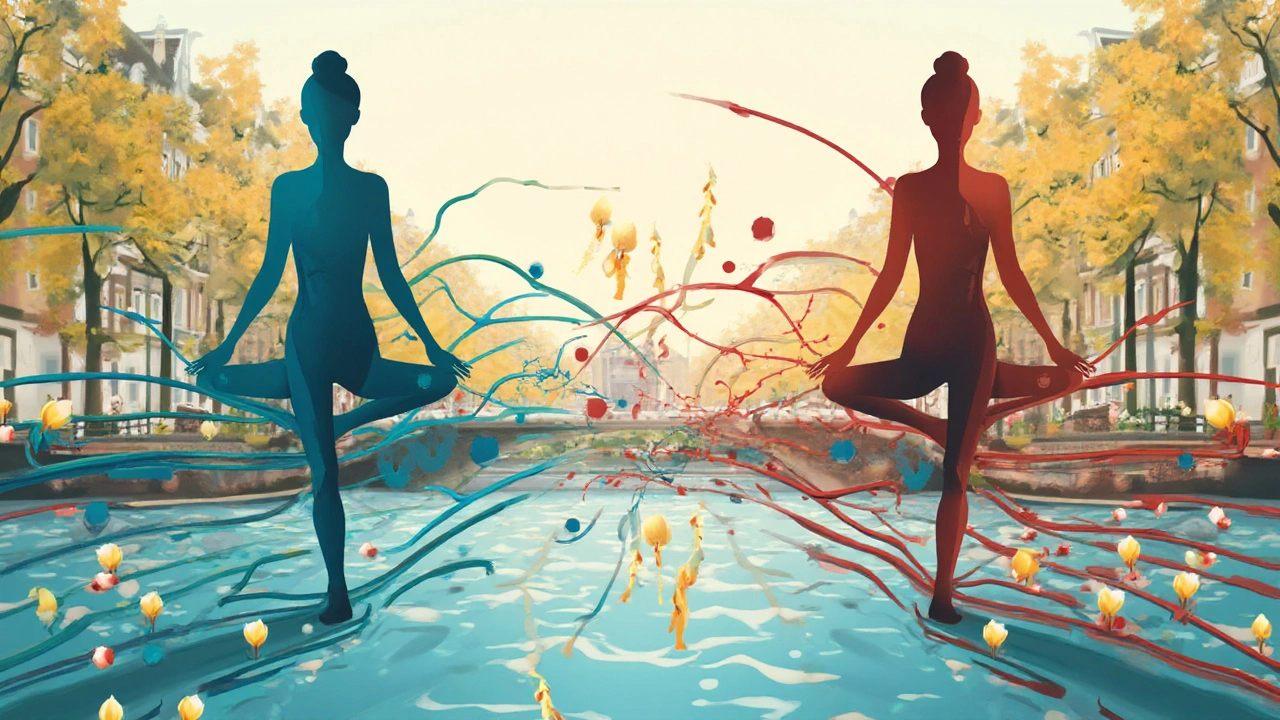
FAQ: Your Tuina & Yoga Combo Questions Answered
How soon after yoga can I get a Tuina massage? Straight after is fine, as long as you’re hydrated and not overheated. Most people like to wait a few hours or schedule an afternoon massage after a morning yoga class to really lean into that relaxed feeling.
Can Tuina replace my regular stretching routine? Not quite. Tuina boosts your flexibility and tension relief, but it’s meant to work alongside regular stretching and yoga—not as a stand-alone fix.
Is Tuina painful? It shouldn’t be. Some pressure is normal, especially on trigger points, but you’re always in control. Speak up if it’s too much.
How often should I combine Tuina with yoga? For most active folks, once a week or every two weeks does the trick. If you’re in heavy training, recovering from an injury, or feeling stuck, you might go more often at first.
Are there risks? Standard stuff applies: skip if you’ve got any infectious skin conditions, open wounds, or serious medical conditions without checking with your doctor. Licensed therapists in Amsterdam should ask about your health history before starting.
Can I book Tuina massage in English? Absolutely. Most Amsterdam studios offer booking and communication in English—and Dutch, of course. Some spots also have Chinese-speaking therapists if you prefer traditional communication.
Are there mobile Tuina therapists in Amsterdam? Yes, a handful of therapists will come to your home—perfect after yoga in your living room. Look for highly rated, certified practitioners to keep things safe and professional.
So there it is—you’ve got the inside scoop. Tuina massage unlocks a new level to your yoga routine, turns recovery into an experience, and lets you meet yoga’s challenges head-on, whether you’re a city cyclist or just rolling out your mat for the very first time. If you’re tempted to give your body a break and your mind a treat, now’s the time to try it. Ready to level up your flow? Start exploring the best Tuina massage options in Amsterdam and keep that post-yoga glow going.
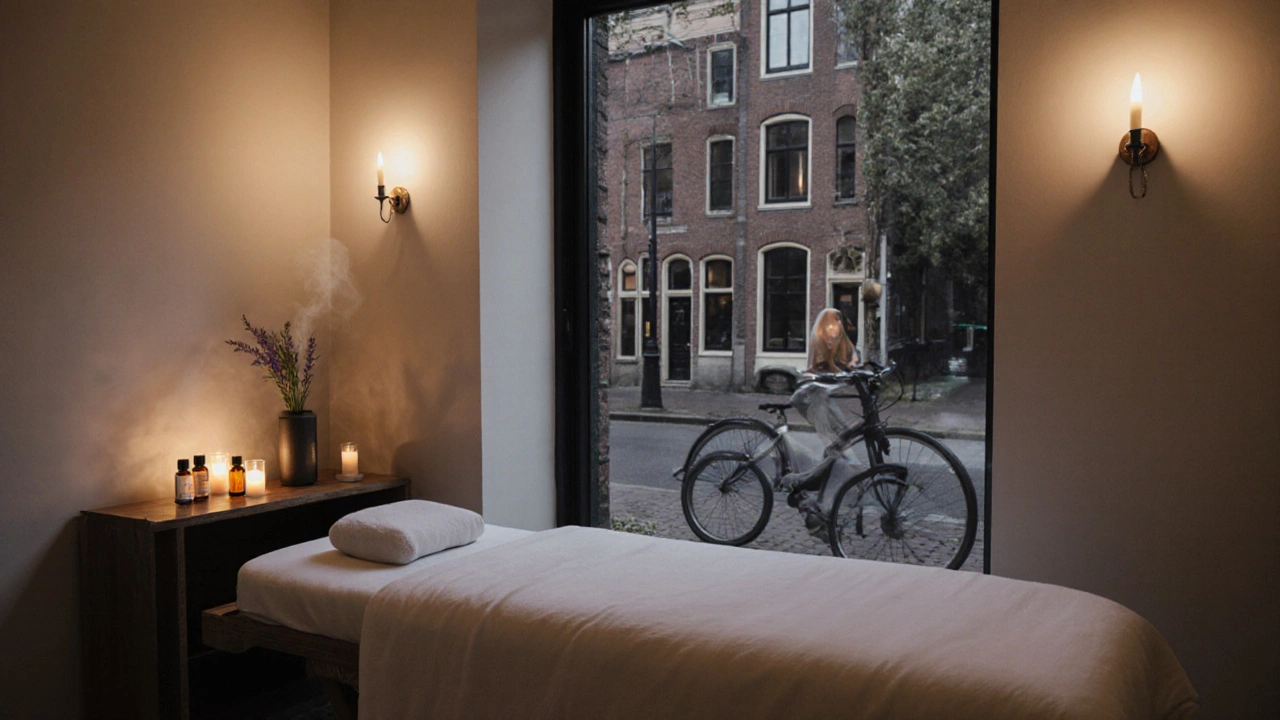
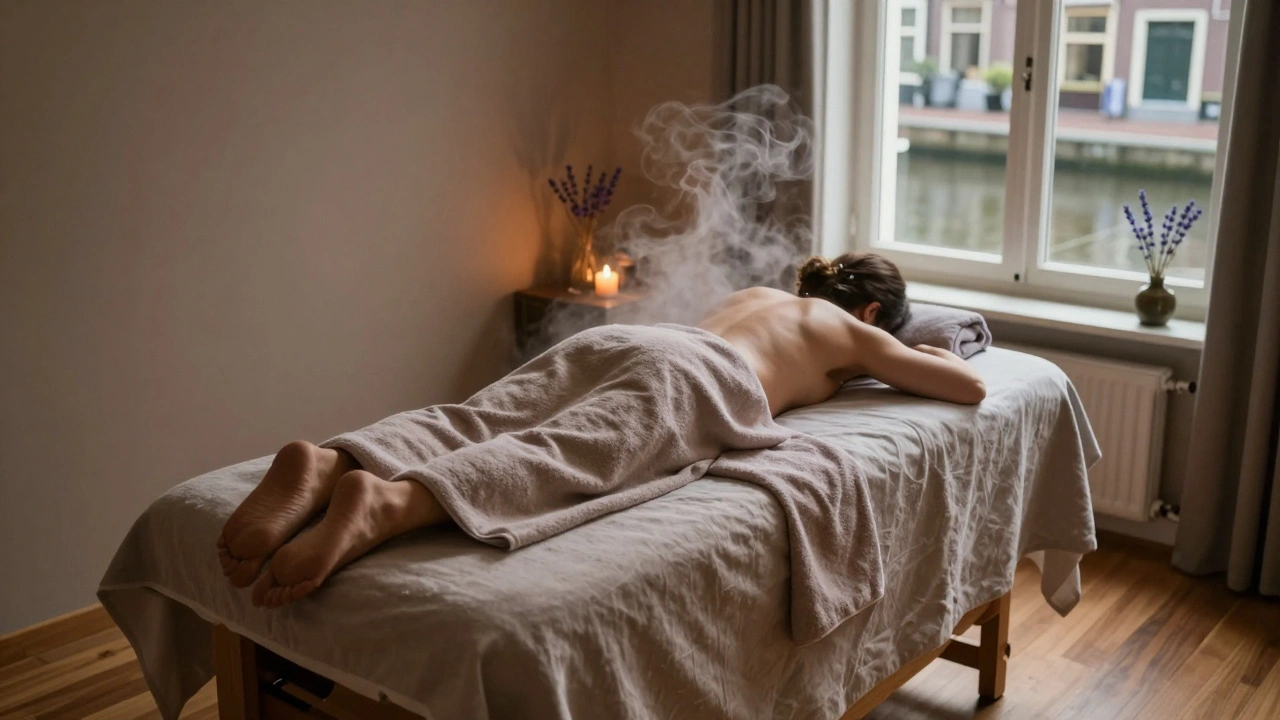
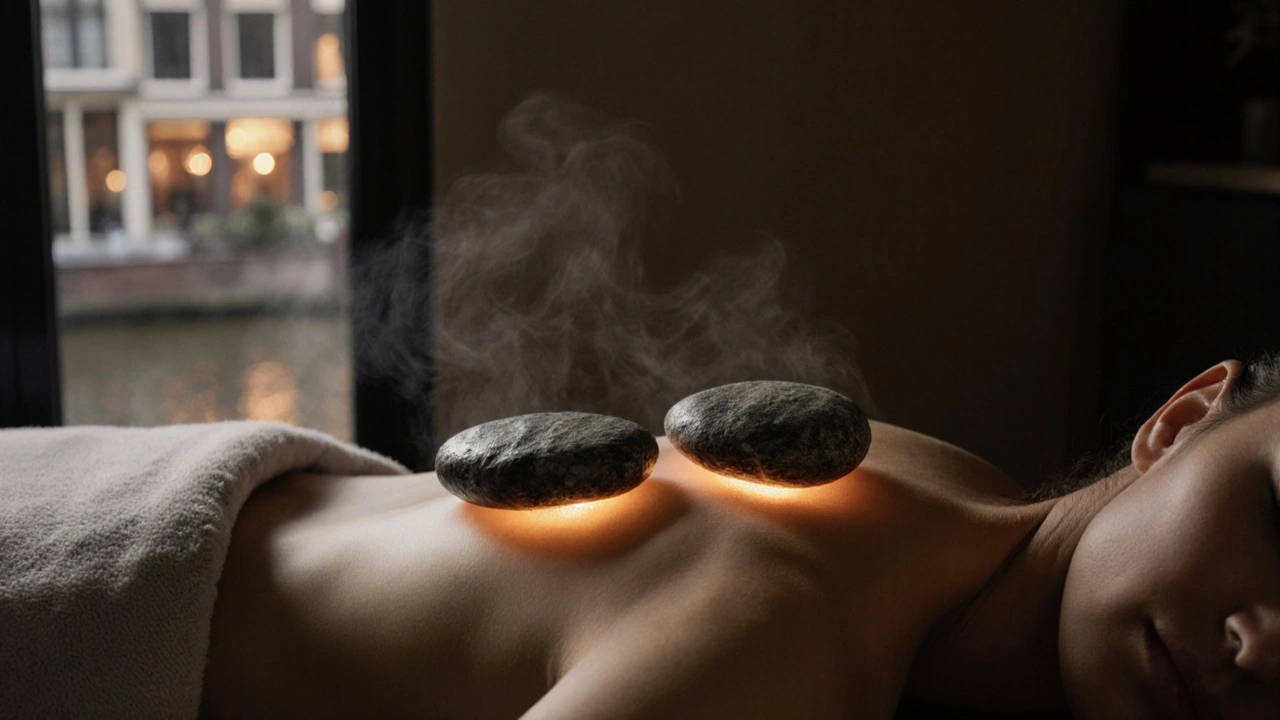
Neil Tejwani
August 5, 2025 AT 15:34Oh great, another wellness fad pairing stuff like it’s some magic formula. Tuina massage and yoga? Really? People act like you suddenly gain enlightenment or become a zen master post-session. Look, if you think lying around and twisting your body with someone poking at your back is gonna fix life, go ahead. But let’s get real, the actual benefits are marginal at best.
Come on, fast-tracking recovery? What does that even mean? Just stretch and chill, or maybe try actual science-backed stuff. Amsterdam or not, this is just overpriced nonsense. I’m all for relaxing, but this hyped-up combo sounds like a cash grab. Someone prove me wrong with legit evidence, not just some hippie buzzwords.
Keren Ruth
August 7, 2025 AT 22:53Hey, I actually tried this combo last year and let me tell you, it really helped me unwind better than anything else I've done. 🌿✨ Tuina massage works wonders by targeting those deep muscle knots while yoga keeps you moving and flexible. It’s all about balance, you know?
If you’re feeling stressed or tense, combining them is honestly a game-changer. Plus, in a bustling city like Amsterdam, this is just what your body needs to recharge. Super recommend trying a session if you haven't yet! 💆♀️🧘♂️
Rhys Harley
August 10, 2025 AT 07:00While I typically approach wellness trends with a degree of skepticism, I must admit the synergy between Tuina massage and yoga presents a compelling narrative. The holistic approach — harmonizing physical manipulation with mindful movement — aligns well with contemporary understandings of somatic integration.
For those immersed in Amsterdam's hectic pace, this pairing could indeed serve as a valuable rejuvenation ritual. However, one must ensure that the sessions are conducted by qualified practitioners to maximize therapeutic benefits and avoid inadvertent harm.
Stephanie Labay
August 12, 2025 AT 14:58Ugh, can we talk about how the wellness industry keeps milking everything for hype? But honestly, I have to admit, the combination of Tuina massage and yoga is pretty dope. It’s like you’re hitting your body from all angles — stretching, massaging, loosening up the tension that just doesn’t go away.
If you’re serious about wellness, especially in a cool city like Amsterdam, these sessions are the real MVP. Just be sure to book with legit places, ya know? It’s all about that authentic vibe, none of that fake baloney.
Mohammed Muzammil
August 14, 2025 AT 23:13This pairing sounds excellent! Both Tuina massage and yoga emphasize opening blocked energy pathways and improving circulation, which together can dramatically boost your recovery and overall wellbeing. As someone who has researched traditional therapies, I encourage anyone to consider this combo if you want to feel more vibrant and balanced.
Amsterdam is a fantastic place for holistic healing, with many skilled practitioners offering these services. My advice? Seek out places with experienced therapists who respect the techniques’ traditions and customize sessions to your needs.
Also, hydration and proper nutrition after these treatments amplify their benefits, so don't overlook those aspects!
Bonnie Cole
August 17, 2025 AT 07:20I've always viewed Tuina massage and yoga not just as physical activities but as cultural experiences that carry deep histories. This combo is a beautiful way of honoring ancient practices while integrating them into modern wellness.
In Amsterdam, where so many cultures converge, it’s meaningful to participate mindfully, respecting the origins of each. Booking the perfect session means asking questions about the practitioners' backgrounds and ensuring that consent and comfort are prioritized throughout.
Remember, wellness is personal and should feel safe and respectful. If done properly, this pairing can truly nourish both body and spirit.
sam ly
August 19, 2025 AT 12:40Look, I don’t buy into all this holistic mumbo jumbo. But maybe there’s some sense in this if it gets people moving and off their butts. Still, I doubt it’s anything revolutionary or unique to Amsterdam. Every city has some mystic snake oil folks selling combos like this. Do your stretching, do your massages, yes whatever, but don’t believe it’s a cure-all or you’re missing out on some secret.
Jeanine Lee
August 21, 2025 AT 21:36Just a heads-up when booking these combo sessions — double-check that the descriptions are clear and the practitioners are certified. Sometimes the distinctions between Tuina and other massage types get blurred, so clarity matters.
Personally, I find this pairing fascinating because while yoga focuses on gradual muscle lengthening and breath control, Tuina targets muscle energy manipulation which can prep the body perfectly before or relax it after yoga practice.
Combining both sounds like a promising way to boost recovery and enhance flexibility. Worth trying if you’re into mindful bodywork!
Hayley Wallington
August 24, 2025 AT 05:43This article reminds me how Amsterdam has become such a hub for alternative health! Tuina and yoga together blend the best of eastern wellness traditions, which is really something to celebrate. The cultural mixing here is pretty inspiring because it allows us all to learn and grow with diverse practices.
When you do book, try to find studios that incorporate the rich histories behind these therapies — it makes the experience so much deeper and more meaningful. Plus, everyone deserves some self-care that truly touches their body and soul.
Stephen Taliercio
September 4, 2025 AT 15:34Does anyone else suspect there might be some hidden agenda behind pushing this Tuina and yoga combo in Amsterdam? Like, is there some corporate interest or wellness cartel promoting it to make more cash under the guise of health benefits? Sounds too convenient how it’s marketed to relieve tension and fast-track recovery.
I get that these therapies can help, but I urge caution and research before blindly following trends. It’s worth questioning who benefits the most from this pairing becoming so popular. Stay woke and informed, folks.